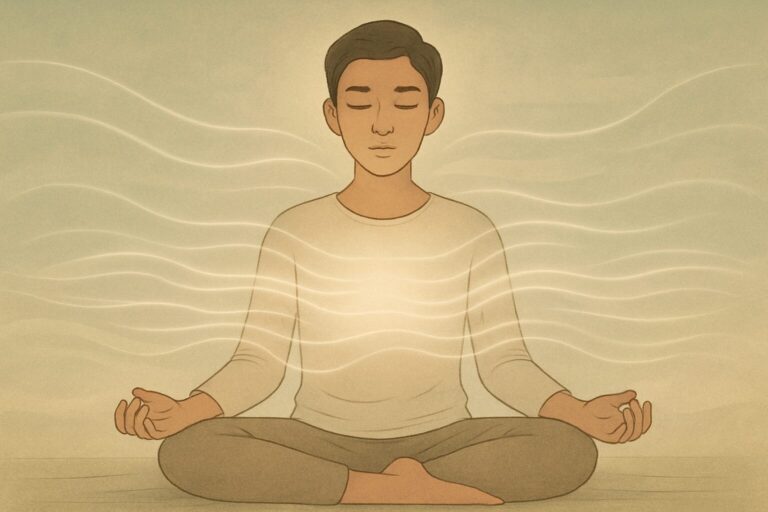Slow Breathing: A Simple Practice That Can Transform Your Life
In the rush of everyday life, most of us forget to do the one thing that truly connects us to the present moment—breathe. Not just breathe, but breathe slowly.
This simple act, often overlooked, holds the power to calm the mind, balance the body, and shift our lives in profound ways.
What is Slow Breathing?
Slow breathing is the conscious practice of breathing at a reduced pace, typically between 2 to 6 breaths per minute, compared to the average 12–20. It often involves gentle inhales through the nose, and extended, smooth exhales that calm the nervous system.
It’s not forced. In fact it’s a soft return to natural rhythm—to the breath you were born with.
Here’s how slow breathing can transform our mind and body :
Activates the Parasympathetic Nervous System
Slow breathing stimulates the vagus nerve, a key component of the parasympathetic nervous system. This shifts your body from the “fight-or-flight” state (sympathetic) into a “rest-and-restore” mode.
As a result:
- Heart rate slows
- Muscles relax
- Digestion improves
- The mind becomes calm and focused
Increases Heart Rate Variability (HRV)
- HRV refers to the variation in time between heartbeats. A higher HRV is a sign of flexibility and resilience in your nervous system. People with high HRV respond better to stress, recover faster, and are less likely to experience burnout.
- Slow, rhythmic breathing has been shown to synchronize the breath with the heartbeat—creating a state of physiological coherence. This alignment improves mental clarity, emotional regulation, and physical endurance.
Reduces Stress Hormones
Chronic stress increases cortisol and adrenaline, which can damage tissues, disrupt sleep, and weaken the immune system. Studies show that slow breathing:
- Reduces cortisol levels
- Enhances dopamine and serotonin (feel-good chemicals)
- Improves mood and emotional balance
It’s like a natural antidepressant, without side effects.
Improves Oxygen Efficiency
Ironically, slower breathing improves oxygenation more than fast or shallow breathing. By increasing carbon dioxide tolerance (CO₂), slow breathing enhances the body’s ability to release oxygen into the tissues (via the Bohr Effect), which means your cells actually get more oxygen when you breathe less.
This leads to:
- Better physical endurance
- Improved concentration
- Reduced fatigue
The Spiritual Shift
In many ancient traditions, the breath is more than biology—it’s life force.
In yoga, it’s prana. In Taoism, it’s chi. In mindfulness, it’s the anchor to now.
Slow breathing brings you back to your essence.
It dissolves the noise, so you can hear your inner guidance.
It’s a gateway to presence, to peace, and to your true self.
Experience It for Yourself: 3 Breaths per Minute Guided Practice
If you’d like to experience the benefits of ultra-slow breathing, try this guided video from our channel where we breathe at a pace of just 3 breaths per minute — a deeply calming and restorative rhythm.
Feel the shift. Even just 5 minutes can leave you more present, peaceful, and recharged.

